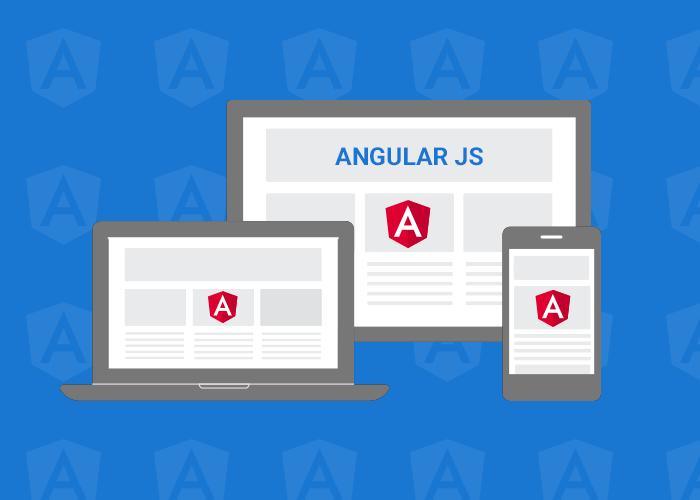
Nowadays, consumers access internet sites and web applications on a wide selection of devices, os’s, and browsers. Thus, designers have to focus extensively on website’s graphical user interface (UI) in order to make it easily accessible, usage, and navigate. As a robust client-side development language, JavaScript helps developers to build rich internet individual interfaces (UIs). The developers can further accelerate internet UI creating through the use of lots of front-end JavaScript frameworks. AngularJS is a widely used front-end framework that is javaScript and maintained by Bing.
Like other available source JavaScript frameworks, AngularJS additionally assists developers to curtail web application development cost that is overall. But it accelerates custom web application development by enabling coders to convey different the different parts of a web application by extending HTML syntax. Also, AngularJS updates the web application’s UI each time the backend changes by supporting data that are two-way. The designers can further extend AngularJS by integrating it with different libraries that are javaScript. There’s also lots of reasoned explanations why many web designers choose AngularJS with other front-end JavaScript frameworks.
Why Many Web-developers Desire AngularJS to Other Front-end JavaScript Frameworks?
Extends HTML Syntax
And also being written in JavaScript, AngularJS normally distributed as a file that is javaScript. It may be embedded into a web page straight through the script tag. Additionally, it allows developers to express various components of a web application by extending HTML with three ng-directives – ng-app, ng-model and ng-bind. The net designers may also make use of AngularJS expressions to bind AngularJS information to HTML without writing additional code.
Implements MVC Pattern Differently
Model-view-controllers make it possible for developers to simplify growth of large web applications by keeping their user business and interface logic separated. But AngularJS implements MVC pattern in a distinct method. The AngularJS team calls the implementation that is distinct of pattern as model-view-whatever. The model-view-whatever architecture makes it easier for programmers to boost the performance and maintainability of complex web applications.
Supports Two Way Data Binding
As well as MVC that is implementing architecture, AngularJS additionally supports two-way data binding. The function helps developers to synchronize the info between model and view components without putting effort that is extra. AngularJS immediately updates the internet application’s frontend each right time its backend modifications. As AngularJS synchronizes the model and view immediately, the designers are not required to implement DOM manipulation.
Improves Server Correspondence
AngularJS reduces web host load dramatically by supporting caching. At precisely the same time, the built-in solutions given by AngularJS help developers to enhance client-server communication. The services further allow it to be easier for web-developers to work alongside various backend systems and solutions. Also, the designers can take benefit of the integrated services to really make the data return asynchronously without composing code that is complex.
Implements Client-Side Form Validation
A variety can be created by the web developers of kinds by combining HTML, CSS and AngularJS. AngularJS further assists designers to implement client-side form validation. It monitors the state regarding the kind in addition to individual text industries. It also notifies users about the state that is current of kind or input industries. The designers can validate the form easily input making use of standard HTML5 attributes. AngularJS also enable them to publish and use custom validation functions.
Keeps the Code Maintainable and Testable
AngularJS assists developers to create readable and maintainable rule by extending HTML syntax. The developers can use directive to create custom HTML syntax in addition to extending existing HTML tags. On top of that, the framework keeps the code testable by enabling code writers to make use of plan JavaScript things. The models in AngularJS are designed as plain JavaScript things. Thus, the developers can use the framework to create clean, readable, maintainable, and testable code.
Provides a Built-in Dependency Injection Subsystem
Usually frontend web developers utilize dependency injection tools to inject dependency to an object in the many way that is appropriate result in the objects change dependencies seamlessly. AngularJS simplifies dependency injection by giving a built-in dependency injection subsystem. The dependency injection subsystem makes it easier for developers to displace specific components off the net application, along with performing evaluating.
A Component of MEAN Stack
Numerous web-developers choose making use of AngularJS as a component that is key of stack along side MangoDB NoSQL database, Express.js and Node.js. As full-stack JavaScript, MEAN enables coders to write both client-side and code that is server-side JavaScript. With more and more enterprises choosing isomorphic applications, AngularJS is being used commonly by developers as a component of SUGGEST stack.
Several frameworks that are angularJS-based
In addition to integrating AngularJS with lots of widely used JavaScript libraries, the net developers also have option to avail several AngularJS-based frameworks – Suave, PrimeNG, QuantumUI, Semantic UI and UI Bootstrap. The UI elements provided by these AngularJS-based frameworks allow it to be easier for web designers to build custom web-based user interfaces. Additionally, these frameworks assist developers generate responsive and web that is cross-browser interfaces.
Keeps Evolving
As mentioned previously, AngularJS is maintained by Google along with a grouped community of designers. Ergo, it keeps evolving consistently to simplify and accelerate internet application development. In November, AngularJS 5 premiered with lots of the latest features. The version that is latest associated with the JavaScript framework simplifies development of modern web applications, eliminates unnecessary code from the application through a build optimizer, and provides a fresh HttpClient.



